On the odd occasion, I leave the house to hunt for tea. It’s a rare occurrence—much like a hermitic groundhog hailing the arrival of spring—but it’s been known to happen. Sometimes that urge falls upon me at night, on a Friday. And on one such night in the spring of 2018, I found myself at The Speakteasy Underground.
Purveyor of this nighttime tea gathering in Portland, Steve Odell—whom I’ve mentioned on this blog a few times—served up something particularly interesting.

It was a Mao Feng green tea hailing from Meng Ding Mountain in Sichuan province, China. Originally, I almost refused it. I wasn’t the biggest fan of Chinese greens, but with very little coaxing, I acquiesced. And it . . . was heavenly; equal parts creamy and sweetly vegetal. I hadn’t tried a pan-fried green quite like it.
Steve regaled the crowd with how he got the tea, and waxed wizardly about sourcing it from a bonafide tea temple.
My third eye turned immediately inward at the mention of “tea temple”.
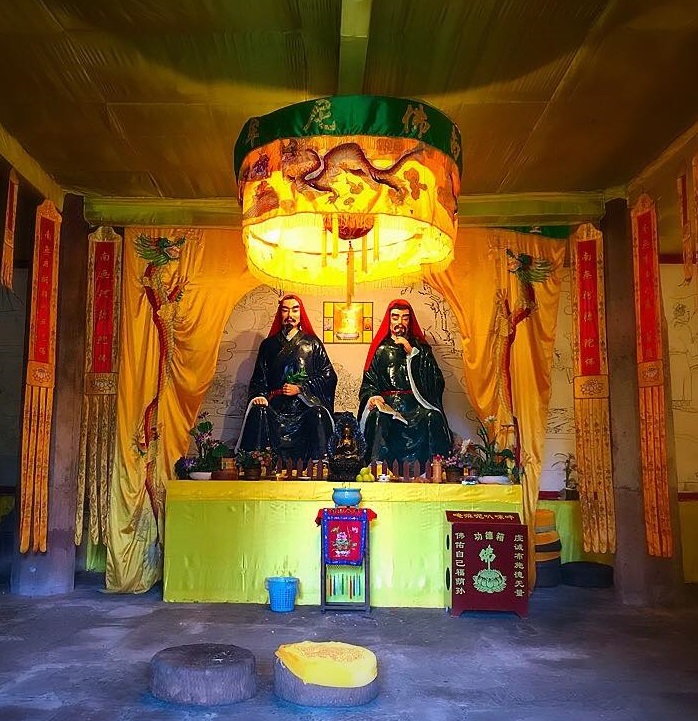
Over the course of the summer, on subsequent visits to the Speakteasy, Steve whipped out other strange offerings from this temple. He even shared anecdotes about the “abbot” who ran it. (I put that in air-quotes for a reason, which I’ll get to later.)
Eventually, I pulled him aside, put the bug in his ear that I wanted to try more teas, and feature this mysterious temple at a later juncture. As is wont to happen, though, life got in the way, and such collaboration was postponed. That is, until the following December.
By then, Steve had opened his own “tea temple” of sorts. Instead of just renting a room in the downstairs alcove to host weekly “tea speakeasy” events, he had taken over the entire house. And he did what any self-respecting tea showman would do. He turned it into a tea house, and he named it . . . well . . . that’s its own tangent.
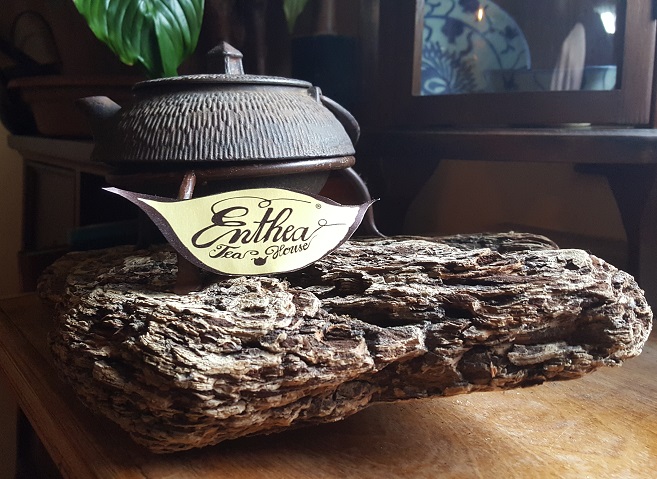
Steve dubbed his new tea house: “Enthea”. In his own words, the reasons were thus:
What is Enthea?
Before Camellia Sinensis, the original scientific name for tea was Thea Sinensis. Though thought to be derived from ‘t’e’ in the Southeastern China Amoy dialect; in Latin, it translates to ‘Goddess from China.’
‘Entheos,’ in Latin, means ‘to find illumination within.’
Thus, Enthea: to find illumination within tea
Enthea Tea house.
SE Portland’s new hub for tea culture illumination.
Experience Enthea.
Well, alrighty then.
About as concretely vague an answer as I would have hoped for, coming from Steve. I dug it. And, apparently, so did the rest of Portland’s burgeoning fringe tea scene. Enthea garnered rave reviews, and the atmosphere had much to do with that, as well as the teas on display.

I could attest to this personally as well. Upon entering the tea house on a random weekday, I was immediately hit with a sense of calm. The energy of the place was soothing; loathe, though I am, to put it that way. Even as I pitched ways to feature his mysterious tea temple, my train of thought derailed within Steve’s literal tea temple I found myself in.
Amidst tea drinking, while we were both semi-lucid, we agreed on a meeting the following week, wherein Steve would break out three teas that fit a particular theme he wanted to convey. He referred to these as his “gate teas”. I wasn’t entirely sure what that meant, but with Steve, I wasn’t entirely sure of anything.
The next week, we sat down, and—before brandishing the first tea—he told me a little about the temple itself. (He also filled in the blanks on later queries, but for the most part, I got the temple dog’s share that day.)
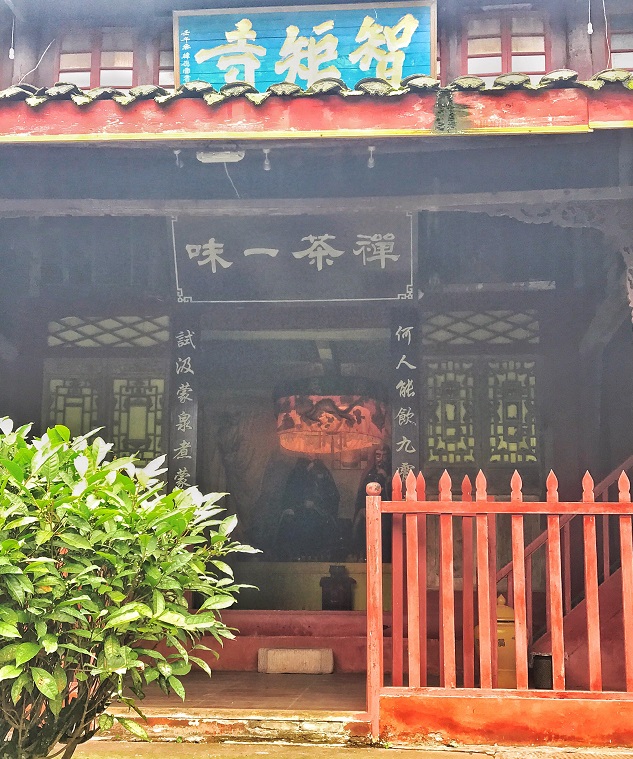
Apparently, the “tea temple” on Meng Ding Mountain used to be a centuries-old Buddhist monastery that fell into disrepair. In the 1960s-‘n-70s, the land around the temple was re-purposed as a state-owned tea garden—following the Cultural Revolution. After all, Meng Ding was prime real estate for tea growing. However, these efforts were halted in the 1990s, and the garden—much like the temple—was abandoned.
Enter an enterprising fellow, a self-described abbot. Was he Buddhist? Was he Taoist? I never got a clear answer. In the early 2000s, both the feral garden, and the on-site temple, were re-re-purposed as a tea education and cultivation hub.
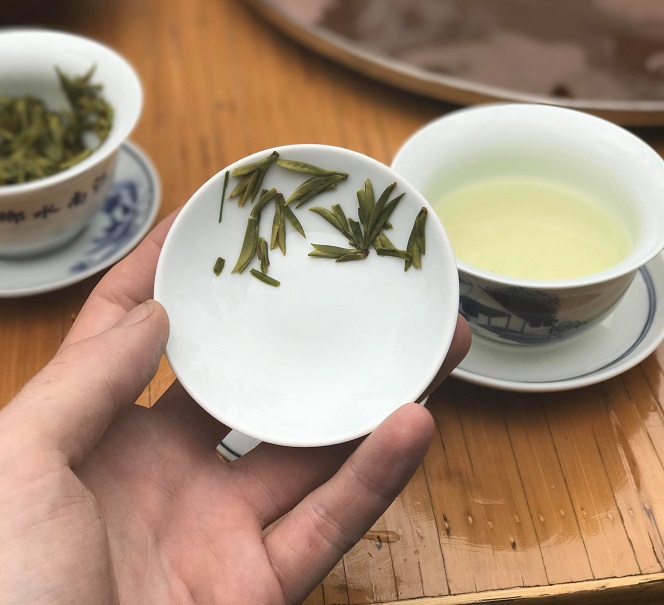
Steve Odell first met the abbot of the temple in 2013, on a trip with his friend and sourcing partner—So Han Fan. Since then, he’s made repeat visits to Meng Ding to further solidify that relationship, and to bring back other oddities made from the temple lands. Plus a few other things, but we’ll get to that.
As mentioned earlier, Steve referred to these as his “gate teas”. The reason (I assume) was to emphasize the special nature of the teas themselves, and to pay homage to the temple proper where they hailed from. Like opening a temple “gate”, so-to-speak.
Golden Gate
The first tea out of the starting gate (pun intended) was a ten-year-old semi-wild heicha.
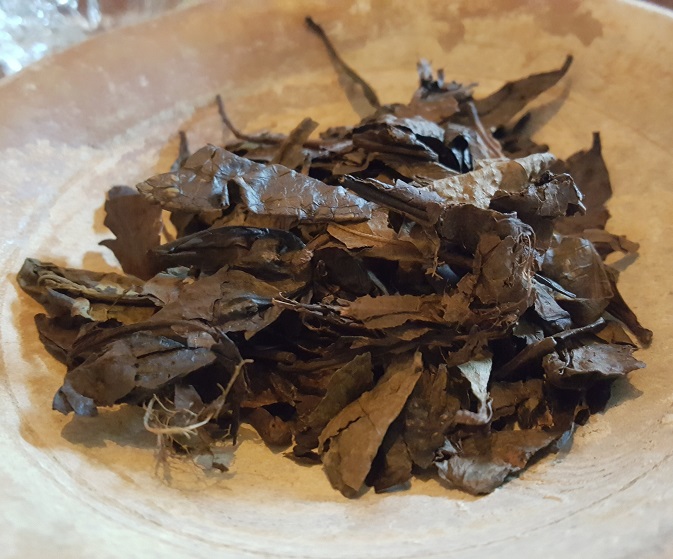
It was made from the secondary growth of relatively un-pruned tea plants—the larger, more mature leaves further down on the stock. It was picked and processed in a manner similar to the hei maocha (unfinished dark tea) prepared for traditional Tibetan export. But instead of being caked or bricked, it was left in its loose form to mature.
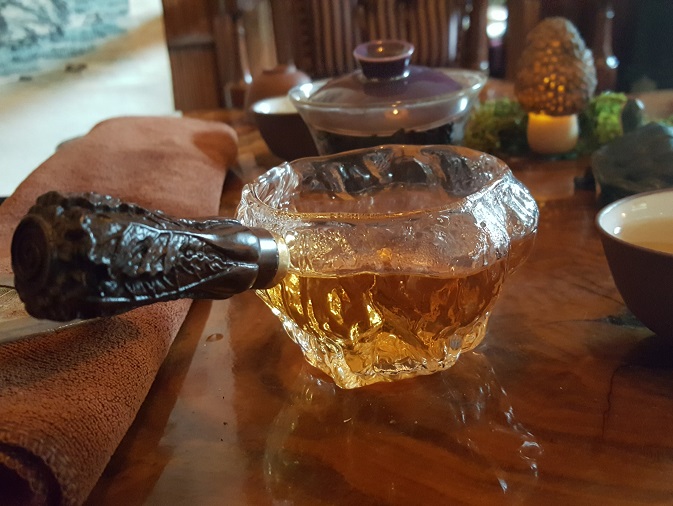
In this form, the tea took on all the maple notes I expected from a decade-old Sichuan heicha, but with a wonderful “other”-ness that transcended definition. It was a hell of a way to start things off. Thirty minutes out of the gate, and I was already figuratively stumbling. For steps and superlatives.
Crimson Gate
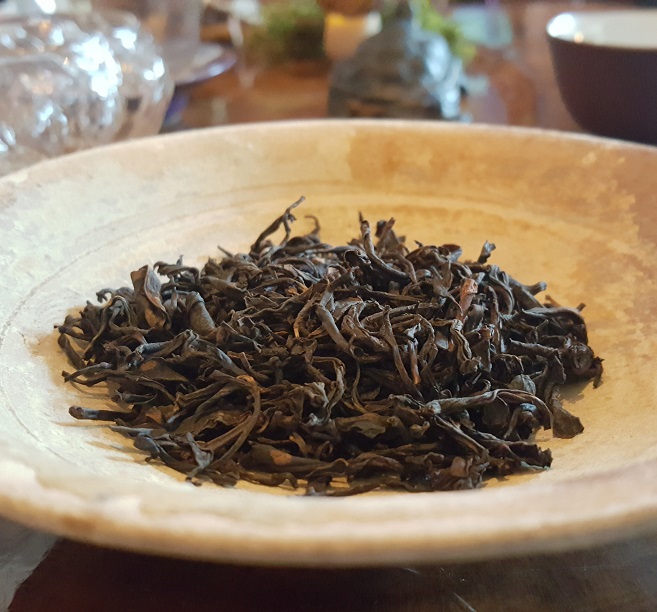
This was a three-year-aged black tea made from the primary growth of the tea plant. That being, the tip of the tree—the buds and young leaves that are always prized. However, unlike most black teas, which are simply withered and introduced to slowly-rising heat to accelerate oxidation, this had an additional step: charcoal roasting.
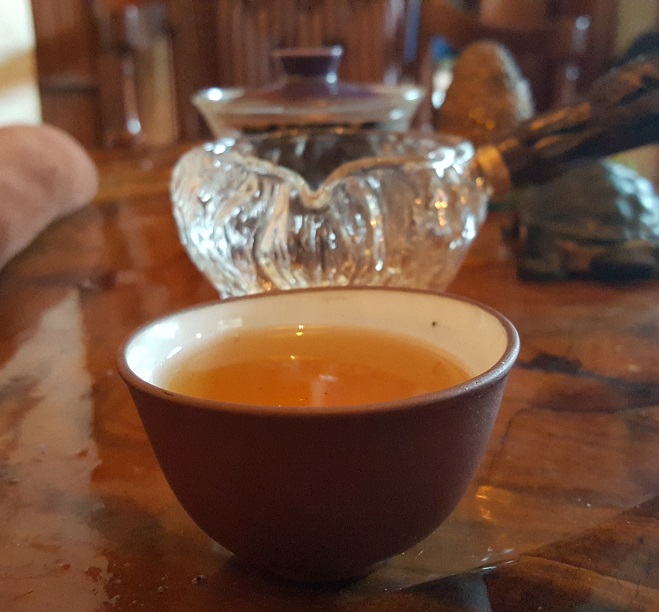
The result was a beverage both soft on appearance, but bold and nuanced on taste. Stone fruit notes took up the forefront and top note, but the crescendo and trail-off were smooth, toasty, and comforting. Like a hug from a Chinese river demon . . . or something?
Ancient Gate
Finally, we ended our triple-threat tasting flight with a bit of a doozy. Now, this tea wasn’t grown and processed on the temple grounds, but rather stored there. The abbot found this heicha stored in a Tibetan monastery . . . for thirty years!
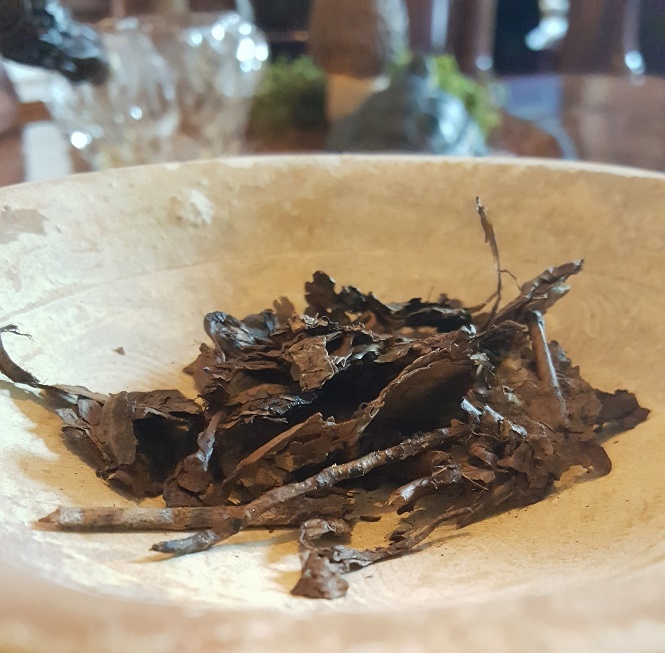
That’s right, it was plucked and processed in the early 1970s, and—upon discovery—brought back to Sichuan to be stored and aged even further. This resulted in a tea with a nuanced, deep, and layered character—imparted by its journey and maturity. And it showed in the taste.
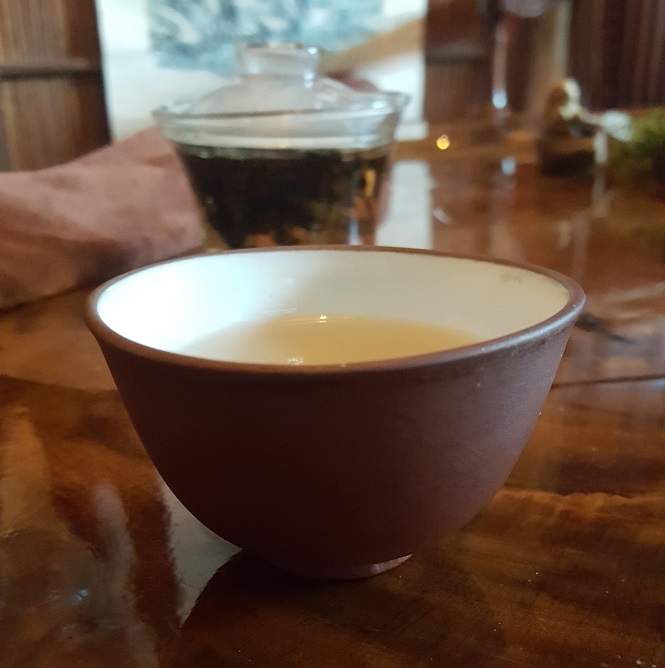
I tried to take cohesive notes during the five-or-so steeps we swigged of this, but this was all I ended up recording:
Like a gate opening, and a pile of pure solidified energy guarded over by a geriatric dragon named Jerry. Opens up right after pre-wash.
Make of that what you will.
I could’ve visited longer with that tea, and basked in the ambiance of Enthea even further, but reality beckoned me to return. Looking back on the experience, though, I did come to realize that sometimes the best stories—even tea stories—aren’t concretely or cohesively defined. After all, that’s how legends are born . . .
And temples made.
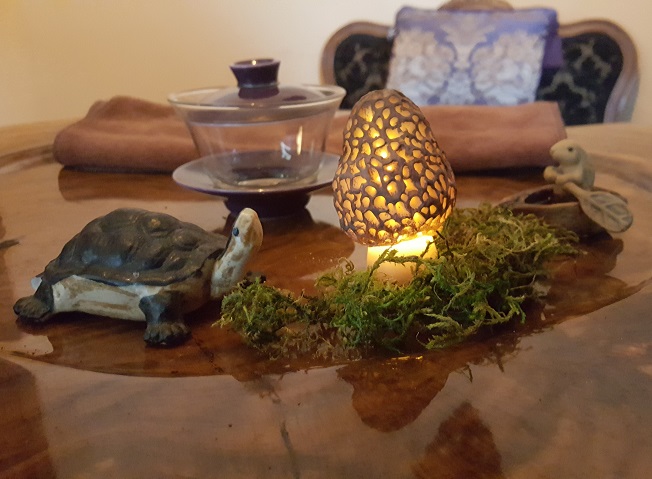
For more information on the Enthea Tea House, go HERE.
For more information on the Speakteasy Underground events, go HERE.
For information on their product line of teas, go to the Rabbit’s Moon Tea Arts website.
Leave a Reply